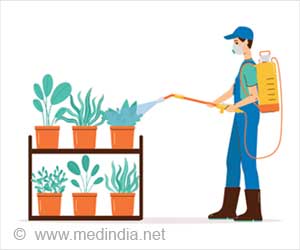If you ask about her child, Sita Devi's eyes well up with tears. A few months ago, her eight-month-old kid died in her arms. Although she managed to take her daughter from her impoverished Sagmal village to the Barwani District Hospital, it was too late.
'Still we tried our best,' said a senior doctor in the hospital, adding it was a case of severe malnutrition. 'But the child had stopped responding to medicines.'Thousands of children in Barwani's tribal villages and adjoining districts face similar fate. Grinding poverty, illiteracy and lack of awareness, besides the failure of public health-care system, are making the situation worse, reports Grassroots Features.
The government and other agencies have launched many programmes. However, tribal areas remain largely untouched. The much-hyped Bal Sanjeevni Abhiyan scheme launched in the state has, many say, failed to ensure nutritional security to tribal children.
In August 2006, two-year-old Jyoti Naval Singh died in the district hospital due to acute malnutrition. Her illiterate parents fed the ailing infant a 'sugar solution' they thought would cure her. When her condition deteriorated, on the advice of a NGO they took her to the hospital.
Madhya Pradesh has the largest number of malnourished children in the country, with 80,000 cases of severe malnutrition. The mortality rate is 87 per 1,000 live births, very high compared to the south Indian states. Over 55 percent of the children are born under weight.
According to the women and child welfare department, 1,026 cases of malnutrition were reported from various blocks in Barwani, from January to October 2006. In 2005 the figure was 1,652. Sendhwa and Thikri blocks are worst affected with 266 and 227 cases respectively.
Advertisement
'Hundreds of deaths due to malnutrition go unreported,' said Val Singh, a tribal activist. Symptoms include tuberculosis, diarrhea and vomiting. 'Therefore, many a time doctors say the cause of death is something else, not malnutrition.'
Advertisement
For instance, in Patti block hospital there is no one to operate an X-ray machine. Patients have to depend on private clinics in Barwani town for tests.
A survey conducted by a NGO found about 75 percent of pregnant women anaemic in tribal areas. It also revealed expenses on health a major cause of tribal indebtedness.
A tribal family in Bokarata sold their one-acre plot for a paltry Rs.5,000 to treat their child with a defective kidney. But that still could not save the child.
Grinding poverty and ineffective, 'costly' public healthcare are forcing tribals into cheaper 'options' like black magic and traditional cures. Superstition also contributes.
'If you want medical attention, you should bribe the doctor,' declared Madhuri Ben, leader of the Jagrit Adivasi Dalit Sangathan. 'Medicines meant for free distribution are taken away and sold by doctors in their private practice.'
Talking about the failure of public health-care, Madhuri recounted the recent experience of a critically ill child taken too late to a government hospital.
Doctors scolded her parents saying: "These tribals are so stupid. Is this the time to bring the child?"
Of course the child died. 'But the real reason for the delay was the parents did not have enough money to bribe the doctors,' she added. 'They had worked two days to mobilise the required amount.'
There are many dimensions to malnutrition. Lack of development and access to medical facilities also cause malnutrition deaths. In many villages beyond Bokarata there are no roads. The only mode of transportation is donkey.
Patients, including pregnant women, are carried on stretchers for five or six kilometres to reach the nearest motorable road. Then they have to wait for hours for a bus to the nearest hospital 15 kilometres away.
Experts say hunger causes more than 50 per cent of the deaths of infants below four in Barwani. The Women and Child Development Department has tried to provide 'daliya' (porridge) and 'panjiri' (bulgar) to children up to the age of six.
But it has failed in rural areas. The government is running the mid-day meal scheme for primary school kids, but hundreds of schools are closed due to absence of teachers.
Fertility is also very high in tribal areas. Many tribals procreate more because they do not know how many kids will survive. 'I have one son and three daughters' admitted Amar Singh Wascala. 'But I need one more son to look after me in old age.'
Source-IANS
SRM






